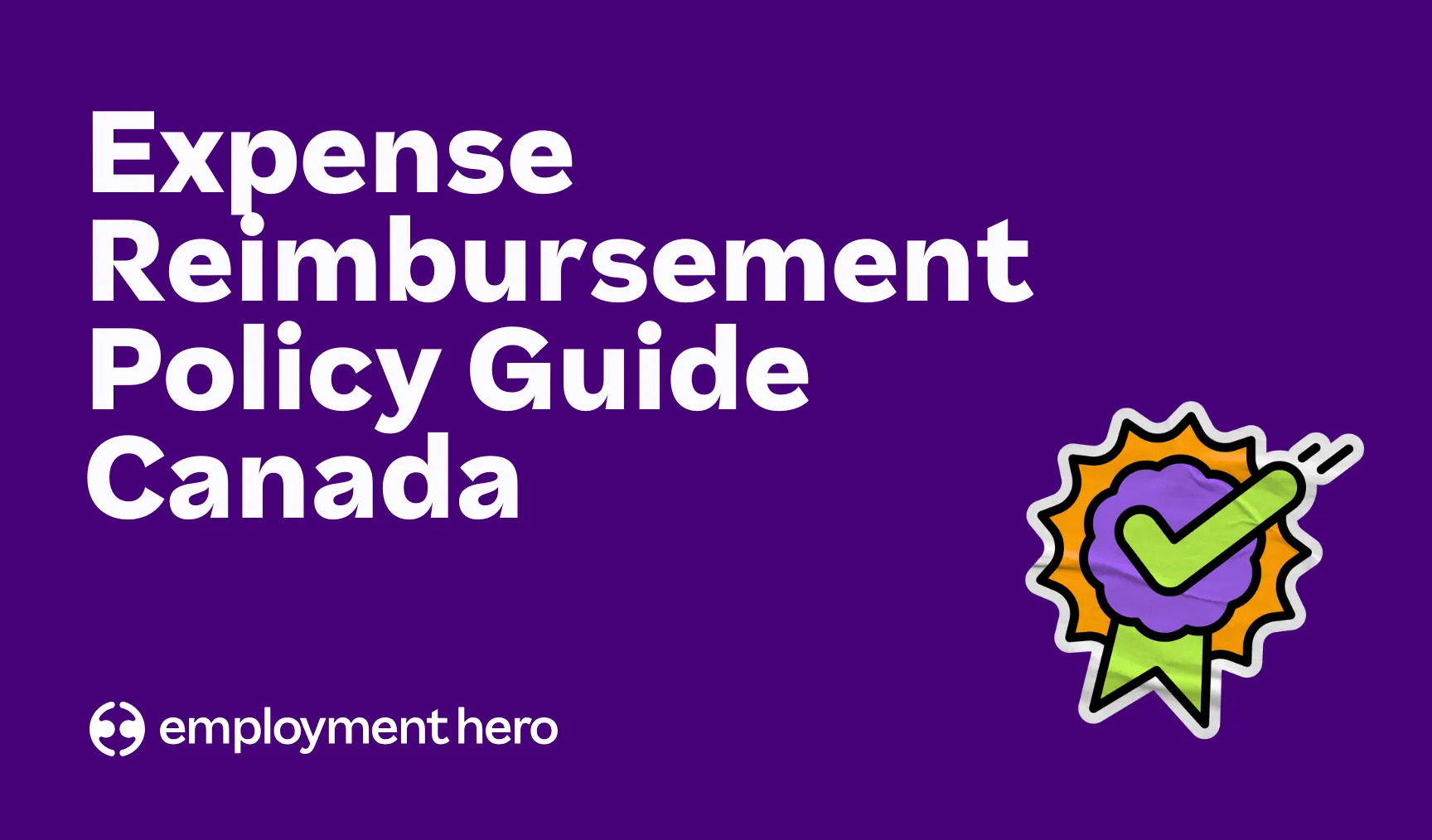Payroll continuity checklist for Canadian SMBs
Published
Payroll continuity checklist for Canadian SMBs
Published
Payroll is the lifeblood of your business. It’s how you show your team you value them. But what happens when that system breaks? A key person gets sick, a bank system fails or a cyberattack locks you out. Suddenly, you’re facing missed paydays, frustrated employees and penalties from the Canada Revenue Agency (CRA).
This is where a payroll continuity plan becomes essential. It’s more than a document—it’s your action plan to guarantee your people are paid accurately and on time, no matter what happens.
What is in this payroll continuity plan checklist?
This guide isn’t just about theory. It’s a hands-on payroll checklist designed specifically for Canadian small and medium-sized businesses (SMBs). We’re giving you the complete framework to build a resilient payroll system from the ground up. You’ll learn to spot threats before they become disasters, document your processes so anyone can step in and leverage modern tools to make your payroll nearly unbreakable. Think of it as your step-by-step guide to achieving peace of mind.

Why do you need a payroll continuity plan?
Leaving payroll to chance is a high-stakes gamble. A single disruption can have a domino effect across your entire business. The risks are not just financial; they’re reputational and cultural. When paycheques are late or incorrect, trust erodes instantly. Your best people might start looking elsewhere and your reputation as a reliable employer takes a serious hit.
For Canadian businesses, the stakes include steep compliance penalties. The CRA doesn’t accept “our system was down” as an excuse for late remittances. Missing these deadlines can lead to fines and interest charges that directly impact your bottom line.
A payroll continuity plan is a core component of business continuity best practices. It demonstrates foresight and protects you from financial penalties, employee dissatisfaction and the kind of brand damage that’s hard to repair. It’s about building a resilient organization that can withstand shocks and keep moving forward.
The first step to achieving that is switching to a cloud software for your payroll processes.
Using cloud computing for payroll
Forget those ancient days of payroll being chained to a single desktop in the office. Cloud payroll software has completely rewritten the rulebook, and it’s your most potent weapon for payroll continuity. Move your payroll to the cloud, and watch your biggest risks shrink. Your data suddenly becomes immune to hard drive crashes or office lockdowns.
Cloud computing for payroll gives you secure, “access-from-anywhere” power. Your dedicated payroll manager—or their rockstar backup—can run payroll from their couch, a coffee shop, or even their phone if needed. The best platforms come with automatic backups, ensuring your critical data is always safe and ready for recovery. If someone’s unwell or your internal system glitches, continuity is already built-in. This isn’t just convenience; it’s about building a fundamentally stronger, more resilient payroll process.
Employment Hero Payroll Software, for example, automates your end-to-end payroll processes integrated with your other HR tools, ensures you stay on top of Canadian regulation changes and unifies all your entire payroll ecosystem – to give you the peace of mind that your payroll is taken care of.
Request a demo of the platform to explore how it can transform payroll for your business.
Now, let’s break down how you can plan for business and payroll continuity in unprecedented times and avoid disruptions at all cost.
Planning for business and payroll continuity
Your payroll continuity plan doesn’t exist in a vacuum. It’s a vital piece of your larger business continuity strategy. Business continuity is about keeping all your essential functions running during a crisis and few functions are more essential than paying your team. Integrating payroll into your wider planning ensures it gets the attention and resources it deserves.
Think about it this way: your business continuity plan might cover what to do during a power outage, but does it specify how you’ll process payroll if that outage lasts for days? By connecting the two, you ensure that your payroll processes are tested and protected with the same rigour as your other critical operations. This aligns your entire organization around a single goal: resilience.

How to create an effective payroll continuity plan
Building a plan isn’t as daunting as it sounds. It’s about taking a structured approach to identify your risks and document your processes. For SMBs, an effective plan is one that is simple, clear and actionable. You don’t need a 100-page manual; you need a practical guide that your team can use in a real emergency. The key is to document your existing workflows and formally assign responsibilities so there’s no confusion when things go wrong. Here’s how you can get started:
Identifying threats and risks
The first step is a risk assessment tailored to your payroll. This involves brainstorming every possible thing that could go wrong. Divide these threats into two categories: external and internal. Be honest and thorough. The goal is to understand your vulnerabilities so you can build defences against them.
External threats
These are factors outside your direct control that can disrupt your payroll. Your plan needs to anticipate them. Examples include:
- Cyberattacks: Ransomware or phishing attacks that lock you out of your systems.
- Bank outages: Your financial institution’s online services go down on payday.
- Natural disasters: Floods, fires or extreme weather that prevent access to your office.
- CRA system downtime: The CRA portal is unavailable when you need to make remittances.
- Vendor issues: Your payroll software provider experiences an unexpected outage.
Internal threats
These threats originate within your organization. They are often more common and just as disruptive as external threats. Examples include:
- Staff turnover: Your sole payroll manager resigns suddenly without a handover.
- Payroll fraud: An employee manipulates the system for personal gain.
- Human error: Incorrect data entry leads to major pay mistakes that need to be fixed urgently.
- Lack of backup authorizers: The one person authorized to approve payroll is unreachable on vacation.
Once you’ve identified key threats to payroll continuity, it’s time to get formal buy-in for your continuity plan before you can actually start documenting it.
Getting leadership and stakeholder support
A plan on paper is useless without buy-in from the top. Your leadership team needs to understand that payroll continuity is not just an administrative task—it’s a strategic imperative. You need their support to prioritize this work and allocate the necessary resources, whether it’s time for training or budget for better software.
Present your case by highlighting the risks of inaction: financial penalties, loss of employee trust and operational chaos. When executives see payroll continuity as a form of insurance for the business, they are far more likely to champion the cause. Collaboration across departments is also key. Your HR, finance and IT teams all have a role to play and getting them involved early ensures a more robust and integrated plan.
Documenting your plan
The core of your payroll continuity plan is documentation. The goal is simple: someone with the right permissions should be able to step in and run your payroll correctly with minimal guidance. This means recording every process, approval step and key contact. Don’t assume knowledge. Write it down as if you’re explaining it to a brand-new employee.
What should you document?
Your documentation should be a complete playbook for your payroll. Essentials to include are:
- Payroll cycles: Pay period start and end dates, pay dates for the entire year.
- Authorization processes: Who approves timesheets? Who authorizes the final payroll run? Who are their designated backups?
- Banking details: Bank account information, contacts at the bank and details for wiring funds or electronic fund transfers (EFTs).
- CRA remittance deadlines: A calendar of all deadlines for source deductions and other remittances.
- Vendor contacts: Account managers and support contacts for your payroll software, bank and any other related services.
- Software credentials: Secure instructions on how to access payroll software (stored securely, of course).

How to document your plan
How you store your plan is as important as what’s in it. It needs to be secure yet accessible to designated personnel in an emergency.
- Store it securely: Use a secure, cloud-based location like a password-protected drive or a dedicated HRIS platform. Avoid storing it on a single local computer.
- Update it regularly: Review and update your plan at least once a year or whenever there’s a change in personnel, software or processes.
- Ensure access: Make sure at least two people (a primary and a backup) know where the plan is and have the credentials to access it.
First things first: we need a very specific scope that outlines what your plan will cover.
Setting your plan’s scope
Clearly define what your payroll continuity plan will and will not cover. This prevents confusion during a crisis. Does your plan only cover your in-house payroll processed in one province? Or does it also need to account for an outsourced provider or employees spread across multiple provinces with different regulations? Be specific. A clear scope helps you focus your efforts and ensures your plan is relevant to your unique operational reality.
Next, let’s break down roles and responsibilities!
Who does what in your plan
Ambiguity is the enemy of crisis management. Your plan must clarify roles and responsibilities with no room for interpretation. Who is in charge during a payroll disruption? What are their specific duties?
- HR: Often responsible for communicating with employees and managing time-tracking data.
- Finance: Typically owns the payroll process, from calculation to funding and reconciliation.
- IT: Responsible for system access, data security and troubleshooting technical issues.
- Management: Provides final approval and leadership during a crisis.
Define a clear chain of command and ensure everyone on the response team understands their role and the roles of others.
You can’t improve what you don’t measure. So, let’s make a note of your key performance metrics and recurring issues.
Assessing your service performance
Regularly assess your payroll process to identify weak points before they cause a failure. Track key metrics like payroll accuracy, timeliness of payments and the time it takes to resolve errors. Are there recurring issues? Are certain steps consistently causing delays? Use this data to pinpoint vulnerabilities and strengthen your processes.
Now, let’s prioritize and break down the actual continuity plan:
Setting service priorities
In a crisis, you may not be able to do everything at once. Your plan needs to prioritize the most critical payroll functions. The absolute top priority is always paying your employees accurately and on time. Non-critical tasks can wait. For example, generating detailed departmental reports can be delayed, but submitting source deductions to the CRA cannot. Define a clear hierarchy of tasks to guide your team’s actions during a disruption.
Creating a quick response guide
When a payroll crisis hits, nobody has time to read a lengthy manual. Create a one-page quick response guide that summarizes the most critical actions. This guide should be a simple, accessible action list that anyone on the payroll response team can grab and use immediately. It should include:
- Immediate first steps (e.g., “Notify the Head of Finance”).
- Key contacts (names and mobile numbers).
- A simplified decision tree (e.g., “If bank is down, follow Plan B”).
Building a communications plan
How you communicate during a payroll disruption is critical to maintaining trust. Your plan must outline how you will communicate with key stakeholders.
- Employees: Be proactive and transparent. Let them know you’re aware of the issue and what you’re doing to fix it. Provide a clear timeline if possible.
- Banks and vendors: Maintain open lines of communication to coordinate a response.
- CRA: If a remittance will be late, contact them proactively to explain the situation.
Testing and improving your plan
A plan that hasn’t been tested is just a theory. You need to run regular scenario tests to see how your plan holds up under pressure. These don’t have to be massive undertakings. A simple tabletop exercise where you walk through a scenario (e.g., “Our payroll manager has won the lottery and is gone. What do we do?”) can reveal significant gaps. Document the lessons learned from each test and use them to update and improve your plan. Aim to test it at least annually.
Setting up backup resources
Resilience comes from redundancy. Your plan must include backup resources to avoid single points of failure.
- Backup authorizers: Ensure there is always a secondary person who can approve payroll.
- Backup banking arrangements: Have a secondary method for paying employees if your primary bank is unavailable.
- Backup data storage: Use cloud solutions that automatically back up your payroll data off-site.
Organizing your plan resources
Centralize all your payroll continuity resources so they are easy to find in an emergency. Create a master folder (stored securely in the cloud) that contains your full plan, the quick response guide, system guides, vendor contracts and an updated list of staff contacts. When time is critical, you don’t want your team hunting for information.

Planning for disaster recovery
Disaster recovery (DR) is the IT-focused component of your continuity plan. It deals with how you recover your technology and data after a major incident. Your DR plan should be tightly integrated with your payroll continuity plan. It needs to cover IT infrastructure, data recovery protocols from backups and security measures to protect your systems during and after a disruption.
Getting feedback from stakeholders
Your plan gets stronger with more input. Actively seek feedback from everyone involved in the payroll process—HR, finance, IT and even a sample of employees. They are on the front lines and may see risks or offer solutions you haven’t considered. Creating formal channels for feedback shows your team that their expertise is valued and fosters a culture of continuous improvement.
Providing feedback
Don’t let good ideas get lost. Establish formal channels for documenting lessons learned after any disruption or test. Use a simple form or a dedicated email address to collect feedback. Review this input regularly and use it to formally update your continuity plan.
Also, keep your team up to date on the new developments such as change in legislation so your plan can be revised accordingly.
How organizations respond to new developments
Your payroll continuity plan is a living document. It must adapt to changes in your business and the world around you. New CRA rules, a shift to remote work or new banking technology can all impact your plan. Schedule regular reviews to assess new developments and adjust your strategies accordingly to ensure your plan never becomes obsolete.
Reference materials
Your plan should include links to essential external resources. This provides quick access to authoritative information when you need it most.
- CRA payroll guidelines and remittance deadlines.
- Canadian Payroll Association best practices.
- Links to your internal process documents and software guides.
Your complete payroll continuity checklist
This guide has walked you through the why and how. The final step is to put it all together. The downloadable payroll checklist provides a comprehensive, step-by-step tool you can use to build and audit your plan directly. It translates all the concepts in this guide into a simple, actionable format.
Payroll continuity and compliance with CRA deadlines
Never forget that payroll compliance is non-negotiable. Your payroll continuity plan must have a specific focus on ensuring CRA remittance deadlines are met, even during a disruption. Late remittances result in penalties and interest, which are an unnecessary cost. Map out your remittance dates and build contingency plans specifically for them.
At Employment Hero, payroll compliance is an absolute priority! From making sure your tax remittances are done right to effortless T4 generation and submission to automated statutory and overtime pay, we take care of it all so payroll legislation is no longer a headache for your team. Our self-serve payroll software has compliance built in and our managed payroll service offers the support of our compliance experts who manage everything from setting up and running your payroll.
Interested in exploring Employment Hero for your business?
Payroll fraud prevention in continuity planning
Disruptions create opportunities for fraud. People may try to take advantage of the chaos or a well-meaning employee might bypass a control to get things done quickly. Your continuity plan should reinforce key fraud prevention measures, such as separation of duties and secondary approvals. Never let a crisis become an excuse for abandoning the controls that protect your business.
Cross-province considerations for payroll continuity
If you have employees in more than one province, your plan needs to account for the different employment standards and regulations. For example, rules for statutory holiday pay, overtime and final pay upon termination vary by province. Your plan must ensure your processes remain compliant across all jurisdictions where you operate, even in a crisis.
Ready to leave payroll worries behind in 2025?
You’ve got the ultimate payroll continuity checklist in your hands—now it’s time to put it to work. Take these steps, own your processes and build a game plan that keeps your business strong, no matter what gets thrown your way. Don’t wait for chaos to hit before scrambling for a solution. Be proactive, take action and lead your team with confidence. Your future self and your employees will thank you.this free guide and kick-start your journey to a thriving, motivated team.
To download the checklist, we just need a few quick details.
Related Resources
-
 Read more: Expense Reimbursement Policy Guide Canada
Read more: Expense Reimbursement Policy Guide CanadaExpense Reimbursement Policy Guide Canada
Download a free expense reimbursement policy guide for Canadian businesses. Learn how to create a clear, compliant policy for managing…
-
 Read more: The professional development plan Canada’s top teams use
Read more: The professional development plan Canada’s top teams useThe professional development plan Canada’s top teams use
Download a free professional development plan template for Canadian businesses. Help employees set goals, track progress and achieve career growth.
-
 Read more: HR Managers: Don’t just survive the festive season, master it
Read more: HR Managers: Don’t just survive the festive season, master itHR Managers: Don’t just survive the festive season, master it
Make year-end easier: manage time-off, payroll, parties and shutdowns with confidence. Get practical tips for Canadian SMBs. Download the free…


















